 For a few years now, I’ve been raving about Crystal Dynamics’ reboot of Tomb Raider and their reimagining of its protagonist, Lara Croft, from a scantily clad, hypersexualized, adolescent male fantasy to a more realistic, appropriately dressed and anatomically restrained, tough, gritty survivor (see my earlier post here). I applauded their depiction of her as an imperfect woman forced by circumstance to make difficult choices and carry out some fairly gruesome acts in order to stay alive and save her friends. Lara’s not proud of what she does, nor does she take pleasure in it. She does it because she has to, because her only other option is to give up.
For a few years now, I’ve been raving about Crystal Dynamics’ reboot of Tomb Raider and their reimagining of its protagonist, Lara Croft, from a scantily clad, hypersexualized, adolescent male fantasy to a more realistic, appropriately dressed and anatomically restrained, tough, gritty survivor (see my earlier post here). I applauded their depiction of her as an imperfect woman forced by circumstance to make difficult choices and carry out some fairly gruesome acts in order to stay alive and save her friends. Lara’s not proud of what she does, nor does she take pleasure in it. She does it because she has to, because her only other option is to give up.
That both gamers and critics praised Tomb Raider came as no surprise. At long last, the franchise had a game that looked stunning, played beautifully, and featured a tough, intelligent heroine that both men and women cared about and could believe in. Here, at last, was the Lara Croft we’d all been waiting for.
And now, Crystal Dynamics has done it again. At Microsoft’s E3 press conference this past Monday, they revealed a teaser trailer for Rise of the Tomb Raider, slated for a late 2015 release. The trailer features all the energy and excitement of the first game, including a few very tense moments of Lara in peril—no surprise there. But it features something else, something unprecedented in the history of gaming.
 The video begins, not with Lara escaping death or brutally overcoming an attacker, but with her in therapy. You read that right: therapy. We see her on the edge of a chair, cloaked in a hoodie, head downcast. As the therapist talks, Lara digs her fingers into the upholstery, clenches her fist, bounces her leg. She can’t sit still. She’s clearly anxious and uncomfortable. This is not the bulletproof heroine we’ve come to expect, casually shaking off the death she’s dealt. Lara has experienced horrors the likes of which most of us can’t imagine, and she’s been deeply affected by them. But neither is she a broken woman. Battered and scarred yet alive, she’s found away to exist in between. Her therapist continues:
The video begins, not with Lara escaping death or brutally overcoming an attacker, but with her in therapy. You read that right: therapy. We see her on the edge of a chair, cloaked in a hoodie, head downcast. As the therapist talks, Lara digs her fingers into the upholstery, clenches her fist, bounces her leg. She can’t sit still. She’s clearly anxious and uncomfortable. This is not the bulletproof heroine we’ve come to expect, casually shaking off the death she’s dealt. Lara has experienced horrors the likes of which most of us can’t imagine, and she’s been deeply affected by them. But neither is she a broken woman. Battered and scarred yet alive, she’s found away to exist in between. Her therapist continues:
For many people, these traumas become a mental trap. They get stuck, like a ship frozen in ice.”
 PTSD. That’s what he’s talking about. This is classic Post-Traumatic Stress Disorder. Lara is suffering from something that affects nearly eight million American adults, that’s all too common among veterans of war and survivors of abuse, that can strike at any age, and that can tear families and communities apart. She has PTSD, and she’s dealing with it. That a video game is so directly dealing with this is extraordinary. And that Lara is working through and recovering from the trauma of her ordeal may provide hope to those facing traumas of their own. I’ll leave you with the experience of a young woman suffering from PTSD who, while playing Tomb Raider, discovered just that:
PTSD. That’s what he’s talking about. This is classic Post-Traumatic Stress Disorder. Lara is suffering from something that affects nearly eight million American adults, that’s all too common among veterans of war and survivors of abuse, that can strike at any age, and that can tear families and communities apart. She has PTSD, and she’s dealing with it. That a video game is so directly dealing with this is extraordinary. And that Lara is working through and recovering from the trauma of her ordeal may provide hope to those facing traumas of their own. I’ll leave you with the experience of a young woman suffering from PTSD who, while playing Tomb Raider, discovered just that:
It didn’t hold any punches, but it didn’t need to… it affected me in a way years of therapy never did. It healed me in a way that no one’s physical comfort, words, and condolences could ever do. It made me realize that, much like Lara Croft, I survived as well—and that I had my own path to walk. That my experiences were real and tangible and yes, they defined me, but that I’d have it no other way. I am a survivor and I am alive.”
After years of buried trauma and hidden pain, this young woman had found solace and salvation by her own hand, through Lara Croft and the game. By reimagining Lara, Crystal Dynamics has done the impossible: from a game heroine, they’ve created a human being.
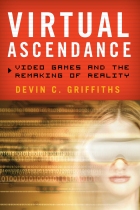
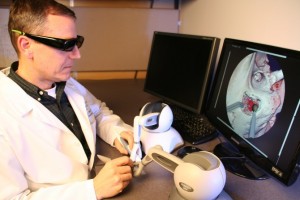 In 1999, the Institute of Medicine published a study that concluded the following: medical errors in the US cost the lives of as many as 98,000 people each year (and run up a $17- $29 billion bill to boot). Ten years later, the
In 1999, the Institute of Medicine published a study that concluded the following: medical errors in the US cost the lives of as many as 98,000 people each year (and run up a $17- $29 billion bill to boot). Ten years later, the 
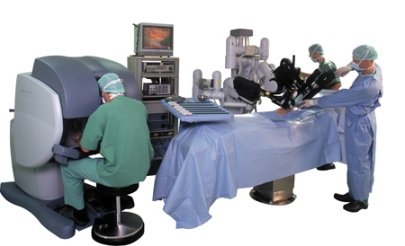
 You can also customize a simulation to closely reflect reality, matching the conditions and characteristics of actual patients. In 2009, Halifax neurosurgeon
You can also customize a simulation to closely reflect reality, matching the conditions and characteristics of actual patients. In 2009, Halifax neurosurgeon  What can surgeons do for six minutes that enhances performance, reduces errors, and improves patient outcomes?
What can surgeons do for six minutes that enhances performance, reduces errors, and improves patient outcomes? Dr. Rosser proved this in 2002, while practicing at Beth Israel Medical Center. He had 33 surgeons participate in a three-month study that involved, among other activities, playing a series of video games before simulating laparoscopic surgery. About half of the participants had a history of game play, though all of them played throughout the study. Researchers compared the results between participants, as well as against non-gaming colleagues. Across the board, they found that surgeons who played video games were faster and more accurate than those who didn’t—dramatically so: at the low end of the skill spectrum, gaming docs made a third fewer errors and were a quarter faster than their non-playing counterparts. Among participants, the most skilled surgeon gamers were nearly half again as accurate and more than a third faster than those at the bottom of the heap. Further, after controlling for extent of training and number of cases completed, the best predictors of surgical success were video game skill and amount of past gaming experience. Said surgeon and participant Asaf Yalif,
Dr. Rosser proved this in 2002, while practicing at Beth Israel Medical Center. He had 33 surgeons participate in a three-month study that involved, among other activities, playing a series of video games before simulating laparoscopic surgery. About half of the participants had a history of game play, though all of them played throughout the study. Researchers compared the results between participants, as well as against non-gaming colleagues. Across the board, they found that surgeons who played video games were faster and more accurate than those who didn’t—dramatically so: at the low end of the skill spectrum, gaming docs made a third fewer errors and were a quarter faster than their non-playing counterparts. Among participants, the most skilled surgeon gamers were nearly half again as accurate and more than a third faster than those at the bottom of the heap. Further, after controlling for extent of training and number of cases completed, the best predictors of surgical success were video game skill and amount of past gaming experience. Said surgeon and participant Asaf Yalif,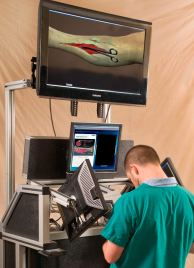 Surgeons can’t operate on live patients every day. It’s a numbers game: there just aren’t enough people who need surgery to go around. Other means of honing surgical skills—such as simulators—are therefore critical. The catch is that typical medical simulators run into the hundreds of thousands of dollars—an expense that can be hard for many hospitals to swallow. A game console—like the Wii, Xbox, or Playstation—costs a fraction of that, and provides a viable and effective way to keep surgeons sharp.
Surgeons can’t operate on live patients every day. It’s a numbers game: there just aren’t enough people who need surgery to go around. Other means of honing surgical skills—such as simulators—are therefore critical. The catch is that typical medical simulators run into the hundreds of thousands of dollars—an expense that can be hard for many hospitals to swallow. A game console—like the Wii, Xbox, or Playstation—costs a fraction of that, and provides a viable and effective way to keep surgeons sharp. When you’re talking about pain, nothing comes close to the excruciating intensity of burning alive. Survivors of severe burns report trying anything—anything—to stop the pain, sometimes resigning themselves to death and hoping they won’t be on fire much longer before the end.
When you’re talking about pain, nothing comes close to the excruciating intensity of burning alive. Survivors of severe burns report trying anything—anything—to stop the pain, sometimes resigning themselves to death and hoping they won’t be on fire much longer before the end. The idea behind SnowWorld predates the game by a decade. It’s called immersive VR distraction, and it was co-developed in 1996 by Hoffman and Dr. David Patterson, head of the Division of Psychology of the University of Washington’s Department of Rehabilitation Medicine. Dr. Patterson also works with patients at the university’s Harborview Burn Center, studying psychological techniques for reducing severe burn pain. According to Patterson, the concept is simple:
The idea behind SnowWorld predates the game by a decade. It’s called immersive VR distraction, and it was co-developed in 1996 by Hoffman and Dr. David Patterson, head of the Division of Psychology of the University of Washington’s Department of Rehabilitation Medicine. Dr. Patterson also works with patients at the university’s Harborview Burn Center, studying psychological techniques for reducing severe burn pain. According to Patterson, the concept is simple: This morning, I woke up, put on sweats and a T-shirt, and got my ass moving. I ran, practiced my soccer skills, got on the skateboard, did some dedicated strength training, cardio, and stretching, even set up with a sparring partner and worked on jabs, hooks and uppercuts—all in the space of about 30 minutes, and all in the comfort of home.
This morning, I woke up, put on sweats and a T-shirt, and got my ass moving. I ran, practiced my soccer skills, got on the skateboard, did some dedicated strength training, cardio, and stretching, even set up with a sparring partner and worked on jabs, hooks and uppercuts—all in the space of about 30 minutes, and all in the comfort of home. And I loved it. EASA 2’s environment is visually engaging and transforms with each exercise (sometimes, as with running, even while you’re exercising). The exercises are fun to do, they got me working hard, and they change frequently enough to keep things interesting—thus avoiding the often mind-numbing repetition that causes people to abandon many traditional workout programs. Your trainer is always there, helping you through your workout and providing encouragement and motivation. And most importantly, you’re there as well—in the form of an avatar that you create as part of your personal profile. This is powerful: Not only do you see yourself performing the exercises, you get immediate visual feedback as to how well you’re doing. I identified with my avatar, and really wanted it to succeed—and often pushed myself a little harder—running faster than my trainer, timing jumps better or trying to jump higher—to ensure that it did.
And I loved it. EASA 2’s environment is visually engaging and transforms with each exercise (sometimes, as with running, even while you’re exercising). The exercises are fun to do, they got me working hard, and they change frequently enough to keep things interesting—thus avoiding the often mind-numbing repetition that causes people to abandon many traditional workout programs. Your trainer is always there, helping you through your workout and providing encouragement and motivation. And most importantly, you’re there as well—in the form of an avatar that you create as part of your personal profile. This is powerful: Not only do you see yourself performing the exercises, you get immediate visual feedback as to how well you’re doing. I identified with my avatar, and really wanted it to succeed—and often pushed myself a little harder—running faster than my trainer, timing jumps better or trying to jump higher—to ensure that it did. The United States population is growing, and I don’t mean our numbers. There’s no delicate way to say this, but too many of us are fat—really fat. Obesity in this country is an epidemic: about a third of all adults and 17 percent of children—three times the rate of 20 years ago—are obese, and not a single state in the union has met the Healthy People 2010 goal to lower obesity rates below 15 percent. Obesity increases the risk of heart disease, type 2 diabetes, cancer… the list goes on. And the economic cost is staggering: obesity hammers us with a $200 billion medical bill, and it’s only getting worse. But most distressing of all, you know all those happy, carefree kids you see everyday? They’ll probably die before you do. That’s right, for the first time in US history, today’s generation of kids probably won’t outlive their parents.
The United States population is growing, and I don’t mean our numbers. There’s no delicate way to say this, but too many of us are fat—really fat. Obesity in this country is an epidemic: about a third of all adults and 17 percent of children—three times the rate of 20 years ago—are obese, and not a single state in the union has met the Healthy People 2010 goal to lower obesity rates below 15 percent. Obesity increases the risk of heart disease, type 2 diabetes, cancer… the list goes on. And the economic cost is staggering: obesity hammers us with a $200 billion medical bill, and it’s only getting worse. But most distressing of all, you know all those happy, carefree kids you see everyday? They’ll probably die before you do. That’s right, for the first time in US history, today’s generation of kids probably won’t outlive their parents. Dr. Adam Noah—Technical Director of Long Island University’s ADAM Center and MoCap Lab, and an avid (and quite accomplished) gamer—plays DDR regularly, and he can tell you from experience that it’s much more like working out than gaming:
Dr. Adam Noah—Technical Director of Long Island University’s ADAM Center and MoCap Lab, and an avid (and quite accomplished) gamer—plays DDR regularly, and he can tell you from experience that it’s much more like working out than gaming: I’m feeling a bit dishonest about something. Well, maybe that’s too strong a word. Let’s say disingenuous. Careful readers will have noticed that I’ve been engaging in a little linguistic sleight-of-hand with respect to games and health. I’ve argued that videogames can help treat a variety of physical and mental issues, and then gone on to talk about how people are adapting existing technology and developing new games to meet a specific health need. And there’s nothing wrong with that. In fact, it’s part of what makes videogames such a powerful tool.
I’m feeling a bit dishonest about something. Well, maybe that’s too strong a word. Let’s say disingenuous. Careful readers will have noticed that I’ve been engaging in a little linguistic sleight-of-hand with respect to games and health. I’ve argued that videogames can help treat a variety of physical and mental issues, and then gone on to talk about how people are adapting existing technology and developing new games to meet a specific health need. And there’s nothing wrong with that. In fact, it’s part of what makes videogames such a powerful tool. Motivating and helpful. Now contrast that with standard physical therapy. PT—or pain and torture, as it’s affectionately known by many who’ve gone through it—is painful, repetitive and downright boring. The problem is, it’s also necessary. So how can you take a treatment modality that’s vital for recovery and make it, well, fun?
Motivating and helpful. Now contrast that with standard physical therapy. PT—or pain and torture, as it’s affectionately known by many who’ve gone through it—is painful, repetitive and downright boring. The problem is, it’s also necessary. So how can you take a treatment modality that’s vital for recovery and make it, well, fun? For about 33 million people around the world, videogames may be a matter of life and death. That’s because gamers have just accomplished something that had confounded scientists for 15 years: They’ve unlocked one of the great mysteries of AIDS.
For about 33 million people around the world, videogames may be a matter of life and death. That’s because gamers have just accomplished something that had confounded scientists for 15 years: They’ve unlocked one of the great mysteries of AIDS.
 Thought you all might find this illuminating. Three separate ideas that all have a common thread, and illustrate the relevance of videogames beyond entertainment.
Thought you all might find this illuminating. Three separate ideas that all have a common thread, and illustrate the relevance of videogames beyond entertainment.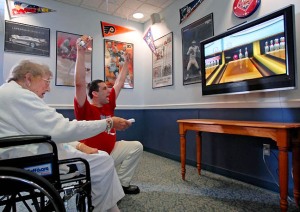 What do videogames have to do with Parkinson’s disease? Quite a lot, actually. According to recent research, active video games like Dance Dance Revolution, Wii Fit and others can help increase strength, cardiovascular fitness, confidence and mental awareness, and decrease reaction time in subjects who train with them. Why are these areas particularly important? They’re the main risk factors for falling—which is primarily what people with Parkinson’s die from. When I interviewed Dr. Adam Noah, Technical Director of the ADAMCenter and MoCap (motion capture) lab at Long Island University, he had this to say:
What do videogames have to do with Parkinson’s disease? Quite a lot, actually. According to recent research, active video games like Dance Dance Revolution, Wii Fit and others can help increase strength, cardiovascular fitness, confidence and mental awareness, and decrease reaction time in subjects who train with them. Why are these areas particularly important? They’re the main risk factors for falling—which is primarily what people with Parkinson’s die from. When I interviewed Dr. Adam Noah, Technical Director of the ADAMCenter and MoCap (motion capture) lab at Long Island University, he had this to say: